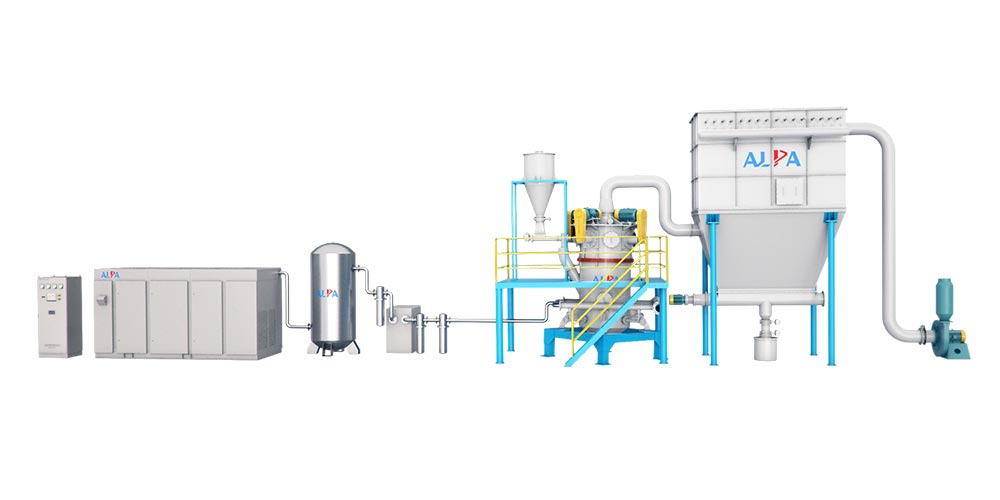What are the irreplaceable functions of the jet mill
Jet mills are widely used in chemical, mineral, metallurgy, abrasives, ceramics, refractory materials, medicine, pesticides, food, health products, new materials and other industries. The reason why it is chosen as the factory production equipment is that the jet mill does have an irreplaceable role.
The working principle of the jet mill: Qualified fine powder is brought into the turbo classifier on the upper part of the fluidized bed by the updraft, and the qualified materials are classified by the jet mill and enter the cyclone collector. A vertical turbine classifier). The finer tailings are brought into the bag filter by the airflow, and after being filtered by the bag filter, the tailings enter the discharge port at the lower part of the filter, and the pure air is evacuated.

The main components of the machine: standard vertical turbine classifier, grinding and classifying are coordinated and completed simultaneously. The speed of the powder concentrator can be adjusted by frequency conversion, and the fineness of the product can be adjusted arbitrarily. For example, if a processing process requires products with multiple particle sizes, you can add two to four more than one classifier as the standard, so that the machine becomes a two-machine five-machine for grinding and classification.
Scope of application: The grinding mechanism of the jet mill determines its wide application range, with high fineness and high purity of the finished product. Typical materials include superhard diamond, silicon carbide, metal powder, ceramic pigments, medicine, biochemistry, etc. By changing the ordinary air in the gas source into inert gases such as nitrogen and carbon dioxide, the machine can be used as an inert gas protection device, suitable for the grinding and classification of flammable, explosive, and oxidizing materials.
Application of jet mill:
- High hardness materials: silicon carbide, various corundum, boron carbide, alumina, zirconia, garnet, zircon sand, diamond, etc.
- Non-metallic minerals: timing, graphite, kaolin, calcium carbonate, mica, barite, mullite, medical stone, wollastonite, talc, pyrophyllite, etc.
- Chemical industry: aluminum hydroxide, silica gel, various dyes, epoxy resins, various additives, etc.
- Food and medicine: pollen, hawthorn, pearl powder, Ganoderma lucidum, various vegetable powder, various Chinese herbal medicine, various health products, cosmetics, antibiotics, etc.
- Metal materials: aluminum powder, magnesium powder, zinc powder, tin powder, copper powder, etc.
- Other materials: ceramic materials, refractory materials, electronic materials, magnetic materials, rare earth materials, phosphors, copy material powders, etc.
Features of air classifier:
- Large output, low energy consumption and high classification efficiency.
- Concentrated particle size: This machine uses the original vertical impeller for classification. The stable classification technology and special sealing measures effectively prevent the leakage of particles, so that the product has no large particles, the particle size is concentrated, and the classification accuracy is high.
- Reasonable structure: products with 1-6 granularities can be produced at the same time according to user requirements.
- Strong applicability: It can be combined with various mills (jet mill, mechanical mill, ball mill, Raymond mill, vibration mill, etc.) to form a closed-circuit or open-circuit joint operation.
- High degree of automation.
